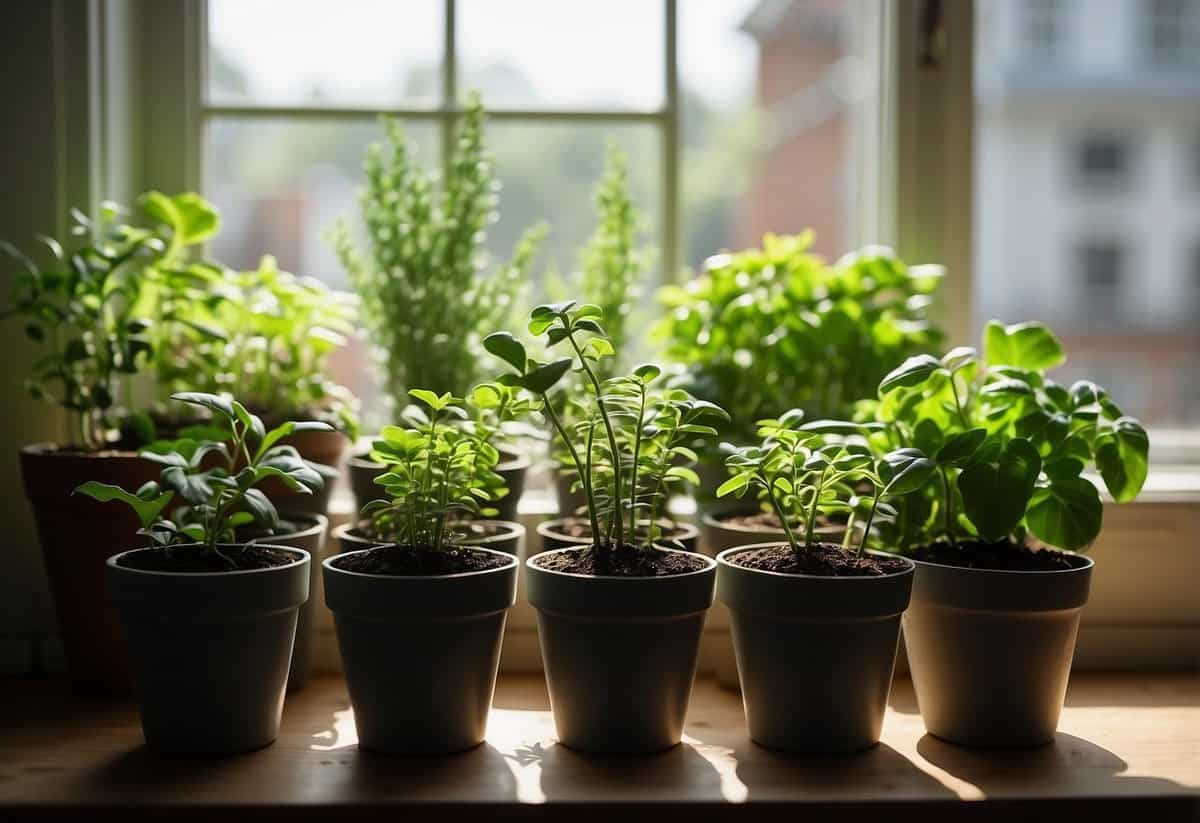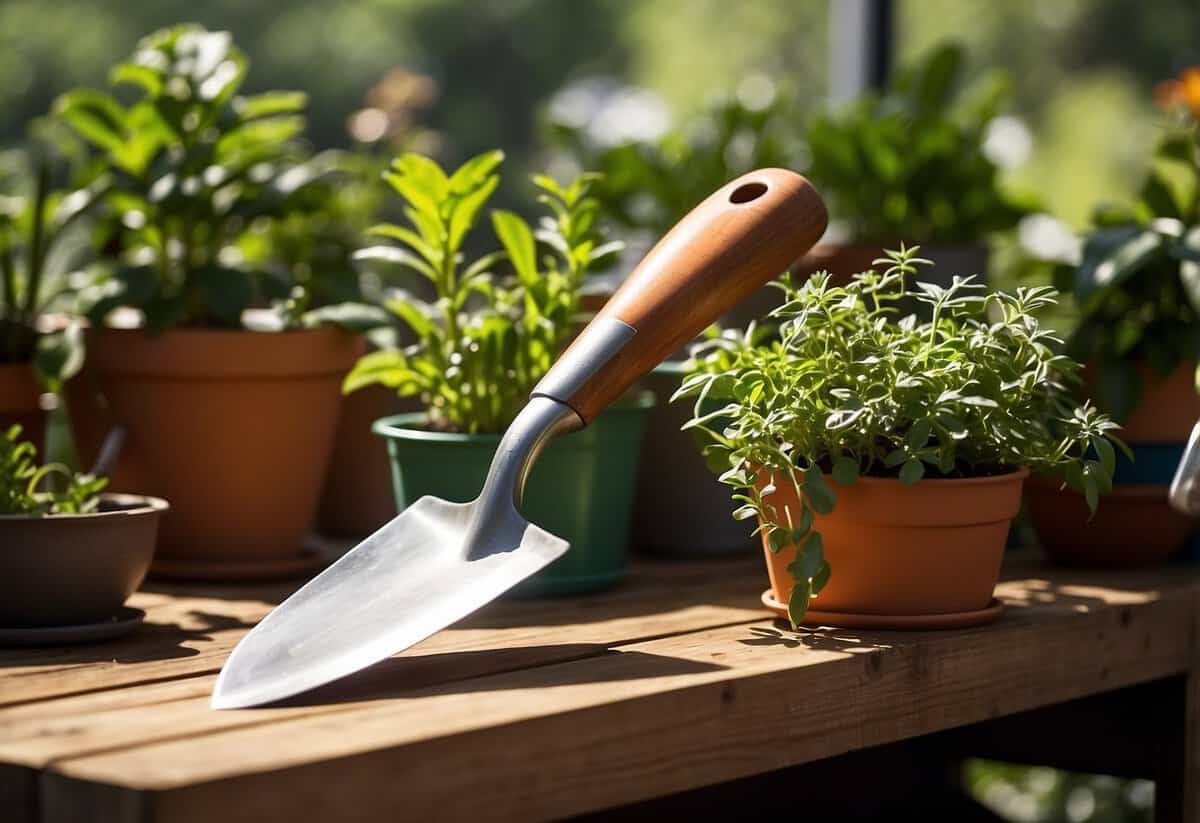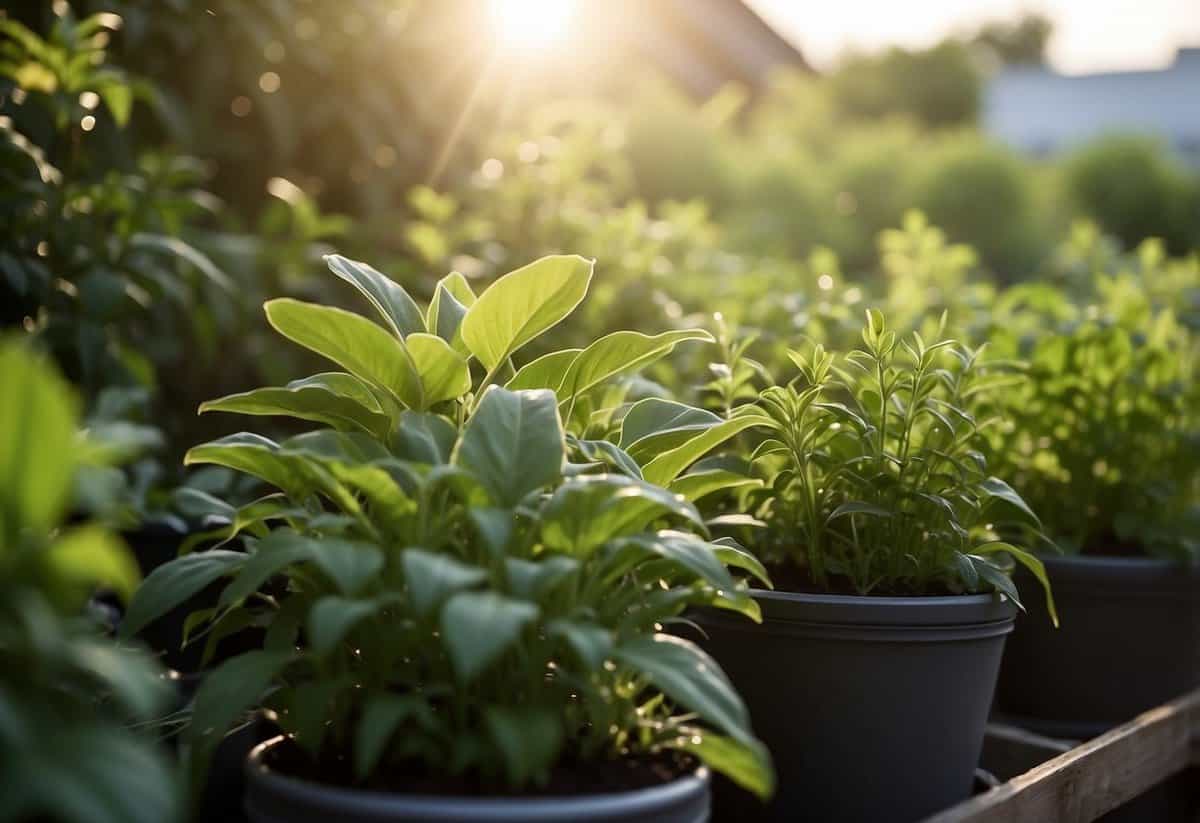Tips to Start Kitchen Garden: A Simple Beginner’s Guide
Starting a kitchen garden can bring joy and fresh, healthy produce right to your doorstep. Whether you have a spacious backyard or just a small balcony, you can grow your own herbs and vegetables. Creating a kitchen garden not only saves money but also provides fresh ingredients for your meals.

When you start your kitchen garden, you will find that it’s a rewarding hobby that reduces stress and brings you closer to nature. The process of planting, nurturing, and harvesting your own food can be deeply satisfying. With a bit of planning and some simple tips, you can create a thriving kitchen garden that meets your culinary needs.
1) Choose the Right Location

Finding the perfect spot for your kitchen garden is essential. Look for an area that gets plenty of sunlight, ideally 6 to 8 hours a day. Sunlight is crucial for your plants to grow strong and healthy.
Make sure the spot has good soil drainage. Avoid areas where water tends to collect, as this can harm your plants. If your soil isn’t great, consider using raised beds so you can control the quality of the soil.
Keep your kitchen garden close to your home. This makes it easy to access and keep an eye on. You’re more likely to take good care of it if it’s just a few steps away!
2) Start with Easy-to-Grow Herbs: Basil, Mint, and Rosemary

Starting with easy-to-grow herbs makes gardening fun and rewarding. Basil is perfect for beginners because it grows quickly. Place it in a sunny spot, and water it regularly.
Mint is another great choice. It’s almost unkillable and can grow in partial shade. Just keep it in a pot as it spreads rapidly.
Rosemary is also a sturdy herb. You can start it from cuttings and grow it indoors or outdoors. It prefers well-drained soil and lots of sunlight.
3) Opt for Raised Beds for Better Soil Control

Using raised beds can help you control the soil quality in your kitchen garden. Raised beds allow you to choose the best soil mix, reducing the chances of weeds and pests.
You can mix 75% topsoil with 25% compost for optimal growth. This mix provides good drainage and nutrients.
Raised beds also make it easier to manage soil depth, ensuring your plants have enough room to grow. For more tips on setting up raised beds, check out this beginner’s guide.
4) Use Compost for Rich, Nutrient-Dense Soil

Compost can greatly improve your kitchen garden soil. Mulching with compost helps retain soil moisture and suppress weeds. To use it as mulch, spread a 2-3 inch layer around your plants.
Avoid piling compost against plant stems to prevent rot. Mixing mature compost into potting soil can also boost water retention in containers. Too much compost can lead to root burn, so use it sparingly in pots to avoid nutrient overload.
To start composting, find a spot with good drainage. Add alternating layers of green and brown materials. Turn the pile regularly to ensure proper aeration and moisture. For more details, check out how to start composting.
5) Invest in Quality Garden Tools: Trowel, Gloves, Watering Can

When starting a kitchen garden, having good tools makes a big difference. A reliable trowel is essential for digging and planting. Look for one that is sturdy and comfortable to hold.
Garden gloves protect your hands from dirt and thorns. Choose a pair that fits well and offers a good grip.
A watering can ensures your plants get the right amount of water. Opt for one with a spout that allows for controlled watering, which helps prevent over-watering. Investing in these tools can make your gardening experience much more enjoyable.
6) Plan Your Garden Layout in Advance

Before you start planting, it’s important to plan your garden layout. Think about the space you have and how to use it best.
Consider raised beds to make planting and maintenance easier. You can also use traditional rows or pots, depending on your garden’s size and shape.
Make sure your garden gets enough sunlight. Most vegetables and herbs need at least six hours of sun per day. Look at your garden throughout the day to see where the sunlight hits.
7) Utilize Vertical Space with Hanging Planters

Using vertical space in your kitchen garden can save room and add greenery to your walls. Hanging planters are a great way to achieve this.
Start by choosing lightweight pots to hang. You can use materials like plastic or fabric for easier handling.
Consider using a DIY water bottle garden. Cut part of a bottle, fill it with soil, and plant herbs or flowers. Hang them with twine to create a unique display.
You can also try planter boxes on a fence. Secure the boxes and fill them with your favorite plants for a beautiful garden wall.
8) Rotate Crops to Prevent Soil Depletion

When you grow the same vegetables in the same spot every year, soil nutrients get used up quickly. Rotating crops helps balance nutrient levels in the soil.
By changing where you plant each season, you can also reduce pest and disease problems. Pests and diseases often depend on specific plants and can’t survive if their host is gone.
For small gardens, try splitting your garden into a few sections. Rotate different crops through these sections yearly for the best results. This simple practice boosts soil health and increases your garden’s productivity. For more details, visit Crop Rotation 101.
9) Practice Regular Pest Control with Natural Remedies

Keeping pests away from your kitchen garden can be simple and safe with natural remedies. You can make an effective vegetable oil spray by mixing 1 cup of vegetable oil, 1 tablespoon of mild soap, and 1 quart of water.
Soapy water is another easy option. Mix 1 teaspoon of organic liquid soap with 1 liter of water, and spray it directly on the bugs.
Think about planting pest-repellent plants like marigolds and basil to deter unwanted insects. A mixture of different techniques works best to keep your garden healthy and thriving.
10) Water Efficiently: Early Morning is Best

Watering your kitchen garden in the early morning is ideal. The cooler temperatures mean less water evaporates, giving plants more time to absorb what they need.
Morning watering helps prevent diseases. By allowing the leaves to dry out during the day, you reduce the risk of mildew and other problems.
If mornings are too busy, the next best time is in the early evening. This keeps your garden healthy without wasting water.
Choosing The Right Location

Picking the best spot for your kitchen garden is vital for healthy plants. Focus on finding a place with enough sunlight and good soil quality for the best results.
Assessing Sunlight
Sunlight is crucial for plant growth. Most kitchen garden plants need 6 to 8 hours of direct sunlight each day. Look for an open area without shade from trees or buildings.
Consider watching how the sun moves across your yard during the day. Doing this helps identify where sunlight lands longest. Morning sun is generally less intense, while afternoon sun is stronger and can support a wider range of plants.
If your garden location lacks enough sunlight, you can use reflective materials or place mirrors to direct more light. These simple adjustments can make a big difference in plant health and growth.
Considering Soil Quality
Soil quality greatly affects plant success. Test your soil to see its type and nutrient levels. Most kitchen garden plants prefer well-draining soil. Heavy clay or sandy soils may need adjustments.
You can improve soil quality by adding compost or organic matter. This boosts nutrients and helps with water retention. Using raised beds can also provide better control over soil conditions, allowing you to use the best mix for your plants.
Keep in mind that different plants might have specific soil needs. Tailoring your soil type to your plant choices can lead to a more fruitful kitchen garden. Regular testing and adjustments ensure that your soil remains fertile and supportive.
Essential Tools For A Kitchen Garden

Starting a kitchen garden requires a few basic tools to help you plant, tend, and grow your vegetables and herbs effectively. You’ll need some essential gardening tools and reliable watering equipment to ensure your plants thrive.
Basic Gardening Tools
-
Trowel: A trowel is essential for digging small holes for planting seeds and seedlings. It’s also great for transplanting plants and mixing soil amendments.
-
Gardening Gloves: Protect your hands from blisters, cuts, and dirt with a good pair of gardening gloves. They must fit comfortably and be durable.
-
Pruners: Use bypass pruners for trimming and shaping plants. They’re perfect for making clean cuts on herbs, flowers, and small branches, helping plants grow back healthy and strong. More about their use can be found in this comprehensive guide.
-
Garden Fork: A garden fork helps loosen the soil and remove weeds. It’s handy when preparing the bed for planting and maintaining soil health.
Watering Equipment
-
Watering Can: A watering can with a long spout allows you to water your plants gently and precisely. You can control the water flow better, which helps avoid overwatering and root damage.
-
Hose with Nozzle: For larger gardens, a hose with an adjustable nozzle is practical. It allows you to change the water pressure and spread, making it suitable for different tasks like watering young plants or cleaning tools.
-
Soaker Hose: Great for efficient watering, a soaker hose releases water slowly and directly to the plant roots. This method conserves water and ensures deep soil penetration.
-
Drip Irrigation: For a more automated option, install a drip irrigation system. This system delivers water right to the roots and can be set on a timer for convenience.
Consistent and adequate watering is crucial, especially during dry periods. For more on minimal maintenance methods, visit Savvy Gardening.







